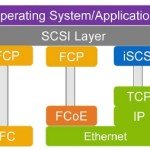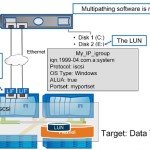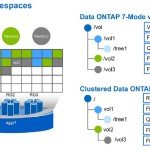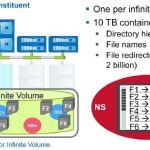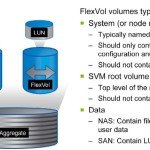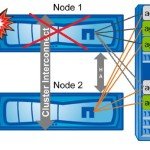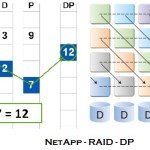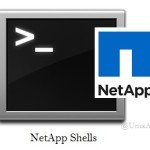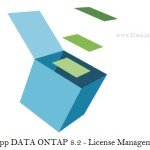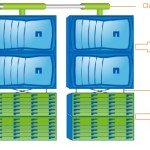NetApp Clustered Data ONTAP is one of the emerging technology in the storage market. Cloud technologies demonstrated that how to reduce the IT operation cost by utilizing commodity hardware. This was the wake call for many of the proprietary hardware vendors in the market to provide the cheapest and reliable solution to the customer. So NetApp has […]
NetApp
NetApp – Clustered DATA ONTAP – SAN – Part 14
NetApp is a unified storage. It supports both NAS and SAN protocols. SAN is a block-based storage system that uses FC, Fibre Channel over Ethernet (FCoE), and iSCSI protocols to make data available over the network. Starting with the Data ONTAP 8.1 operating system, clustered Data ONTAP systems began supporting SANs on clusters of up to […]
NetApp – Clustered DATA ONTAP – Configure Export policy – Part 13
Export polices are used to restrict the NFS/CIFS access to the volumes to clients that match specific parameters. Export polices contains one or more rules that process each client access request . A Vserver can contain multiple export polices and each volume can be associate with desired export polices to provide the access to the clients. By […]
NetApp – Clustered DATA ONTAP – Volumes – Part 12
In NetApp , Volumes are used to store the system data, filesystem and clients data. By default, node’s operating system (mroot) is installed on volume “vol0”. Volumes are created on top of aggregates and vol0 resides on aggr0 by default. The “volume create” command creates a volume on a specified Vserver and storage aggregate. NetApp offerers there […]
NetApp – Clustered DATA ONTAP – Data Vserver (SVM)- Part 11
NetApp Clustered data ONTAP consists three type of vServers, which is helping in managing the node, cluster and data access to the clients. Node Vserver – Responsible to Manage the nodes. It automatically creates when the node joins the cluster. Admin Vserver – Responsible to Manage the entire cluster. It automatically creates during the cluster setup. Data Vserver – cluster […]
NetApp – Clustered DATA ONTAP – Storage Failover – SFO – Part 10
In NetApp Storage system, RAID feature will provide the fault tolerance in-case of any disk failures. But what will happen if the controller(node) itself fails ? NetApp ships the controllers as HA pairs (Two controllers in one chassis ). If one node fails , automatically other controller will take over the storage. Enabling storage failover (SFO) is […]
NetApp – Clustered DATA ONTAP – Storage Aggregate – Part 9
Storage systems should provide the fault tolerance if any disk failures occurs in disk-shelf’s. NetApp uses the RAID-DP technology to provide the fault tolerance. A RAID group includes several disks that are linked together in a storage system. Although there are different implementations of RAID, Data ONTAP supports only RAID 4 and RAID-DP. Data ONTAP classifies disks as one of four types for […]
NetApp – Clustered DATA ONTAP – Shells & Directories – Part 8
The one of the most famous proverb about the Unix systems is – “Where there is a shell there’s a way” . If you want to directly interact with system kernel, you need a shell. NetApp Clustered Data ONTAP uses the Free BSD operating system on the controllers. You can manage the resources from cluster […]
NetApp – Clustered DATA ONTAP – License Management – Part 7
In NetApp Data ONTAP , you must buy license keys to enable the additional features. NetApp Data ONTAP 8.2 onwards ,all the licesne keys are 28 characters in length. In Clustered Data ONTAP , you must keep the license entitlement same across the all the nodes. This will ensure that fail-over will happen without any issues. In this […]
NetApp – Configuring the Two Node Cluster – Part 6
This article will demonstrates that how to configure the NetApp (Clustered ONTAP) two node cluster. Since I am going to use the simulator for this demonstration, we can’t virtualize the HA pair controllers. I will use two separate nodes to form the cluster with switch-less configuration(Assuming that direct cluster inter-connect cabling is done between nodes). […]
